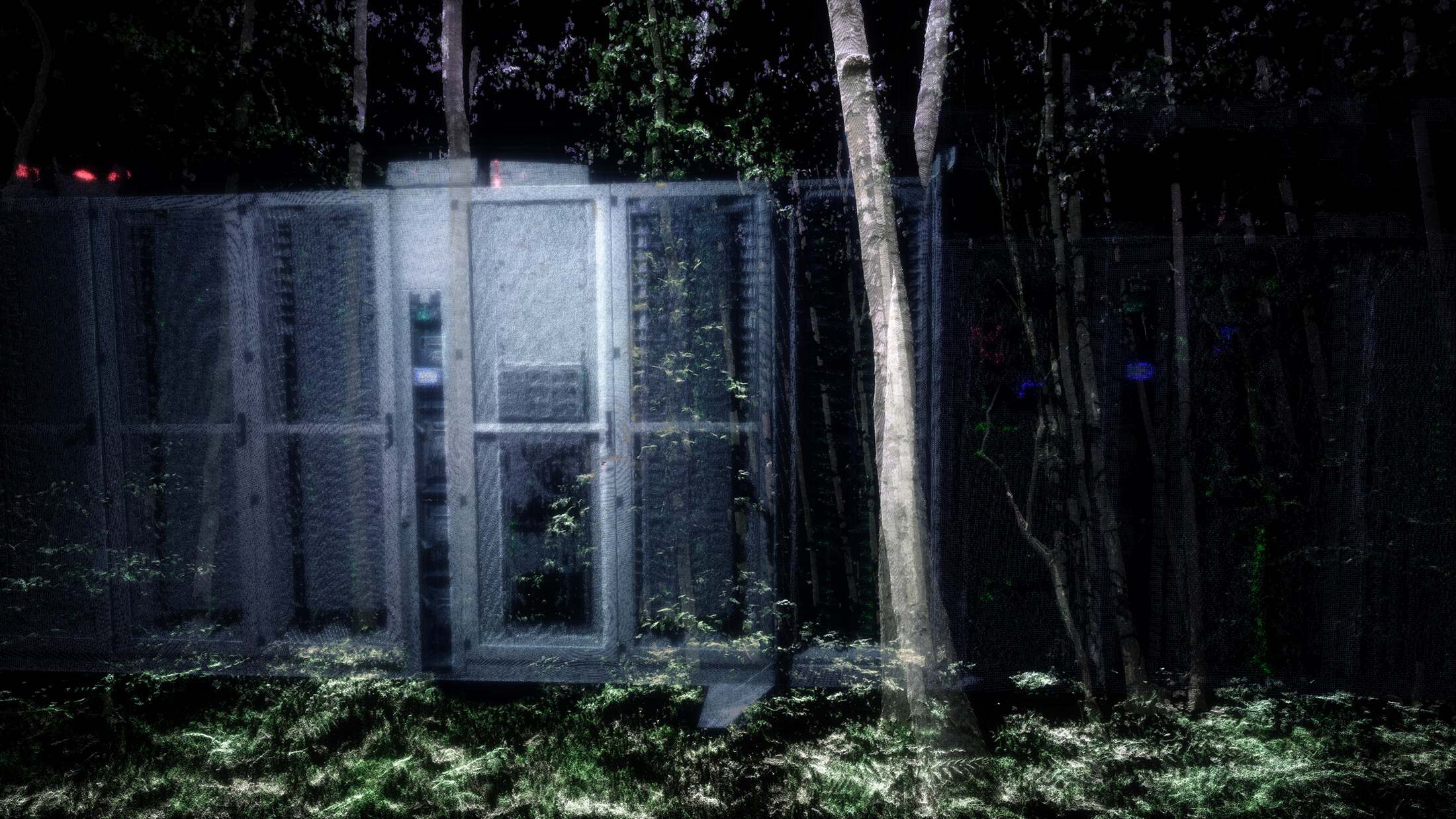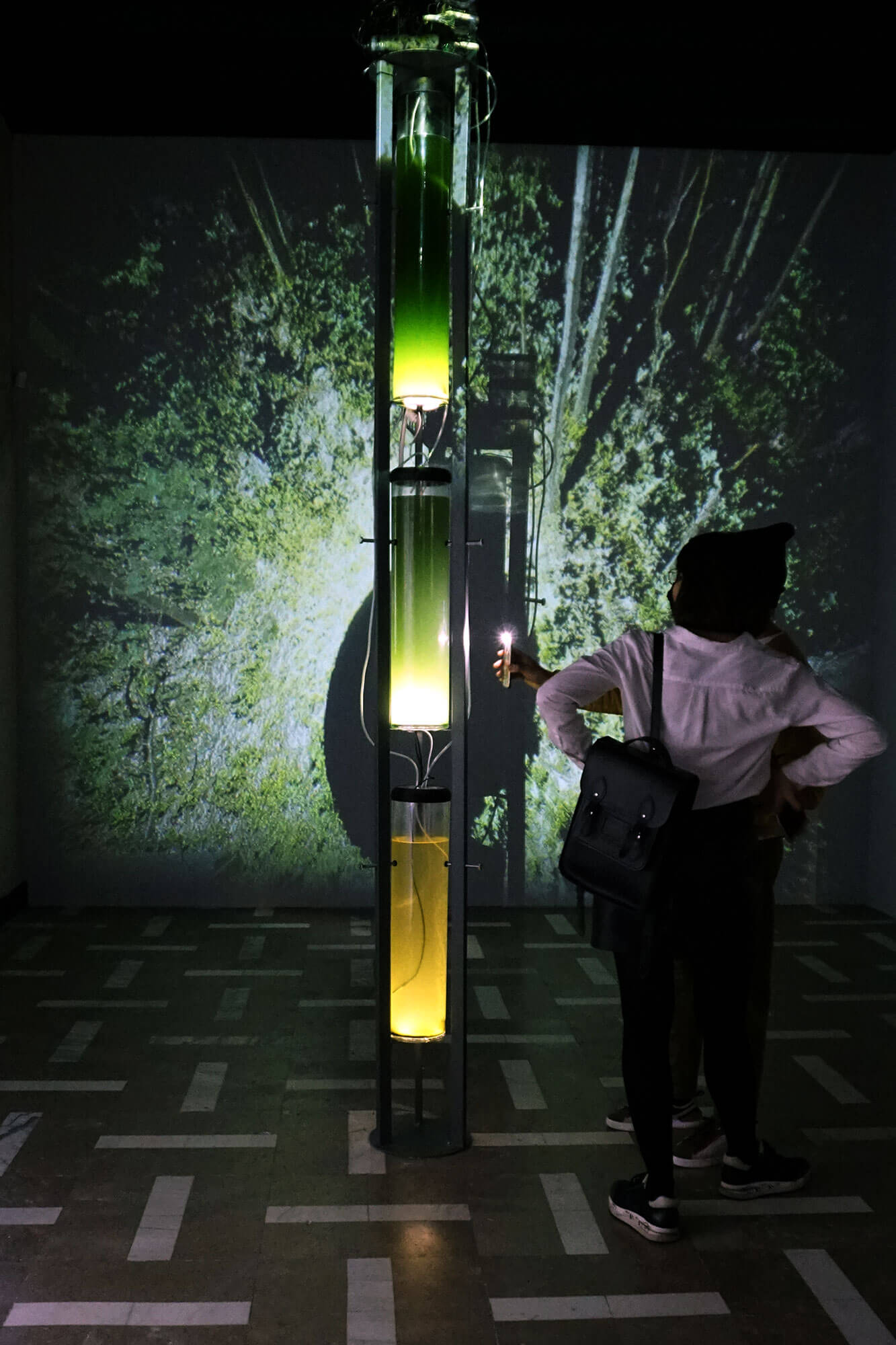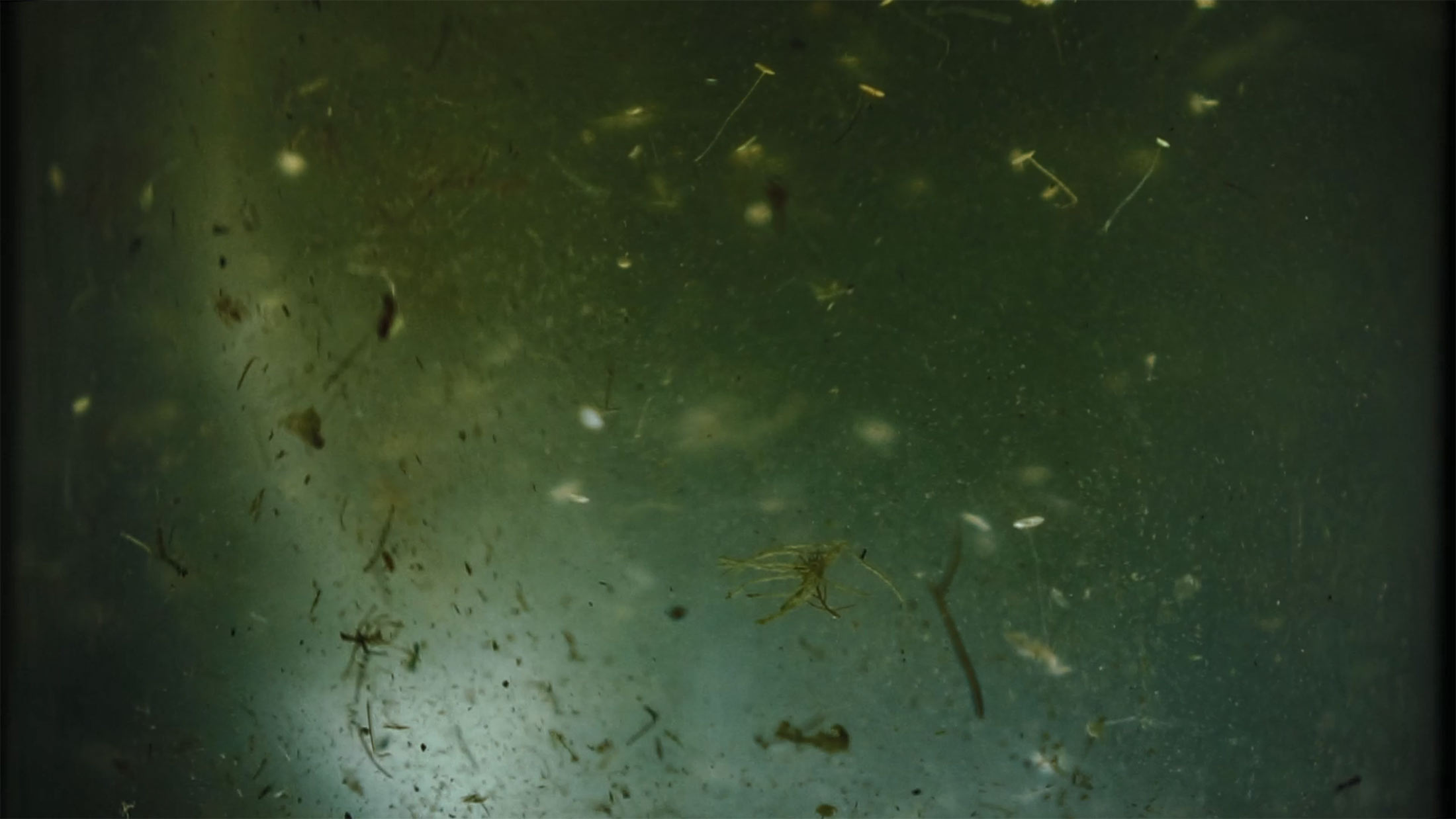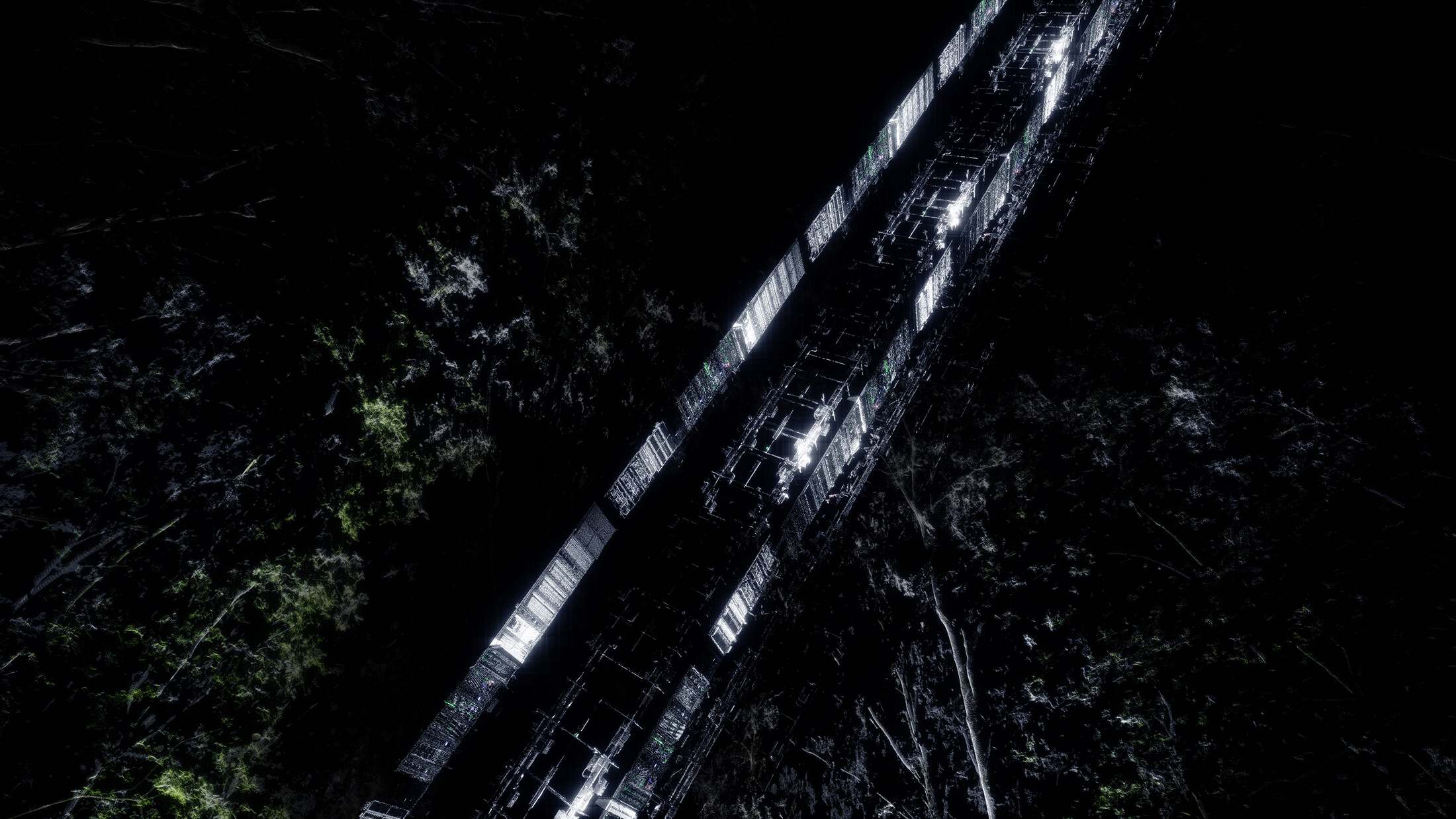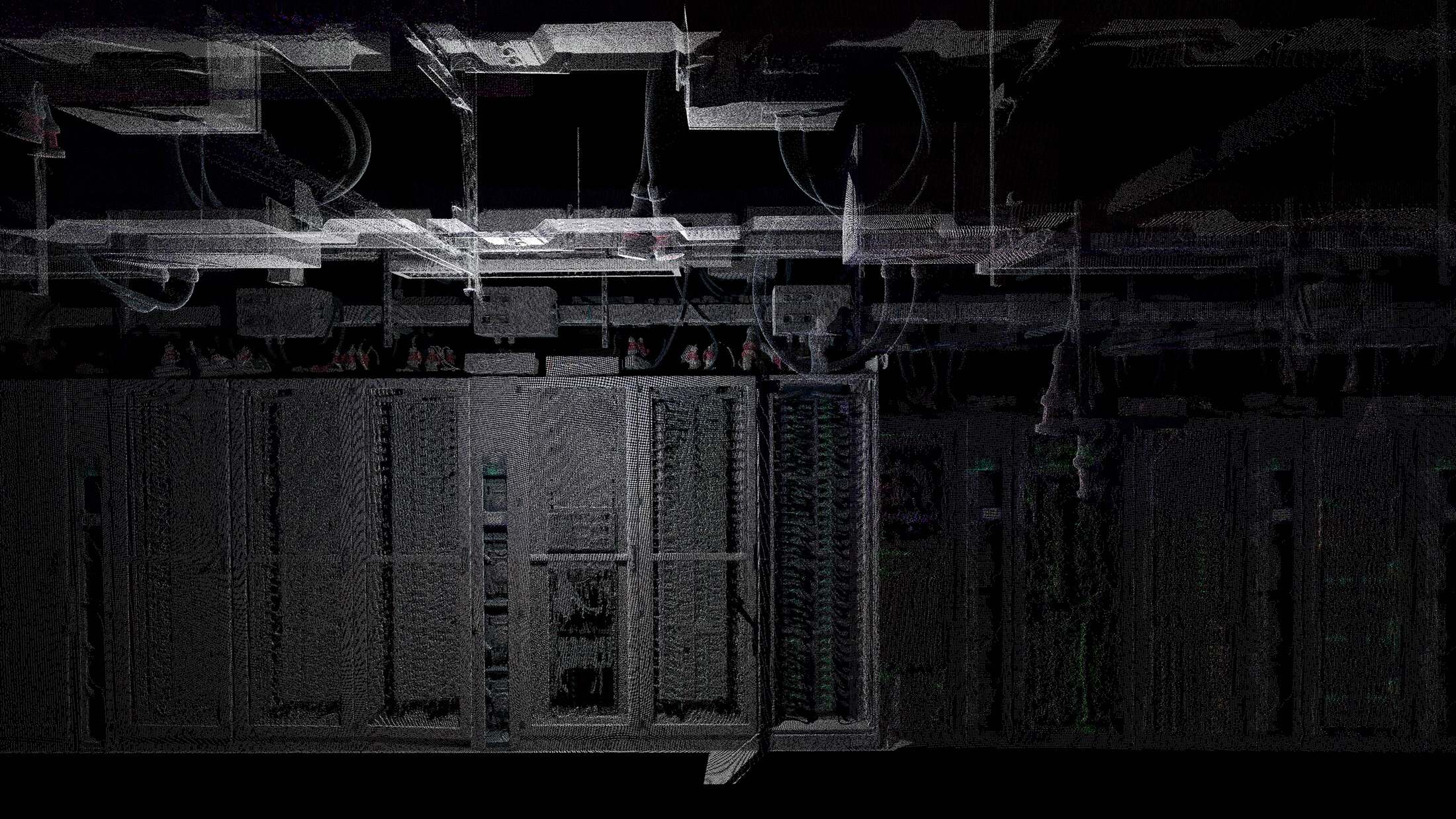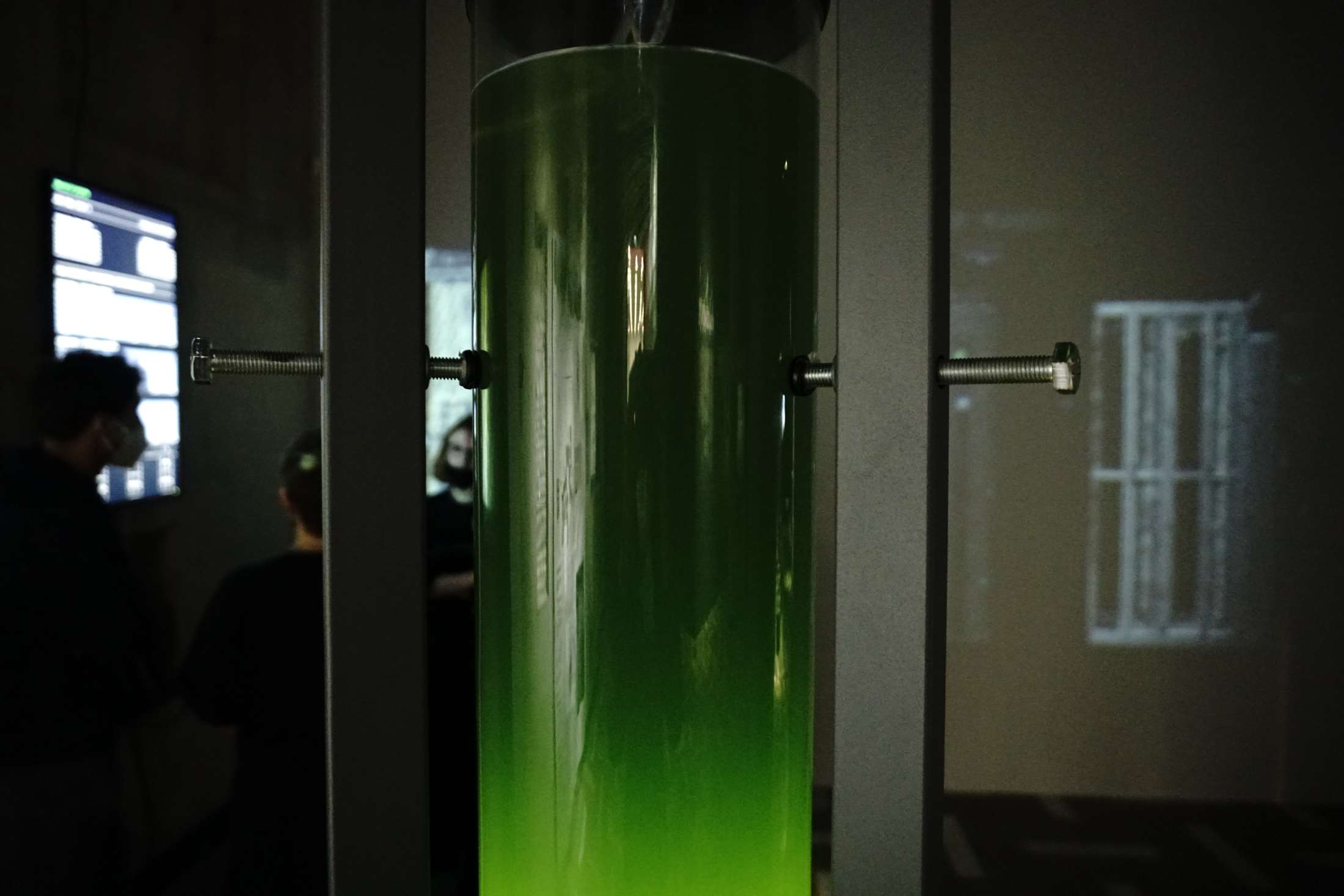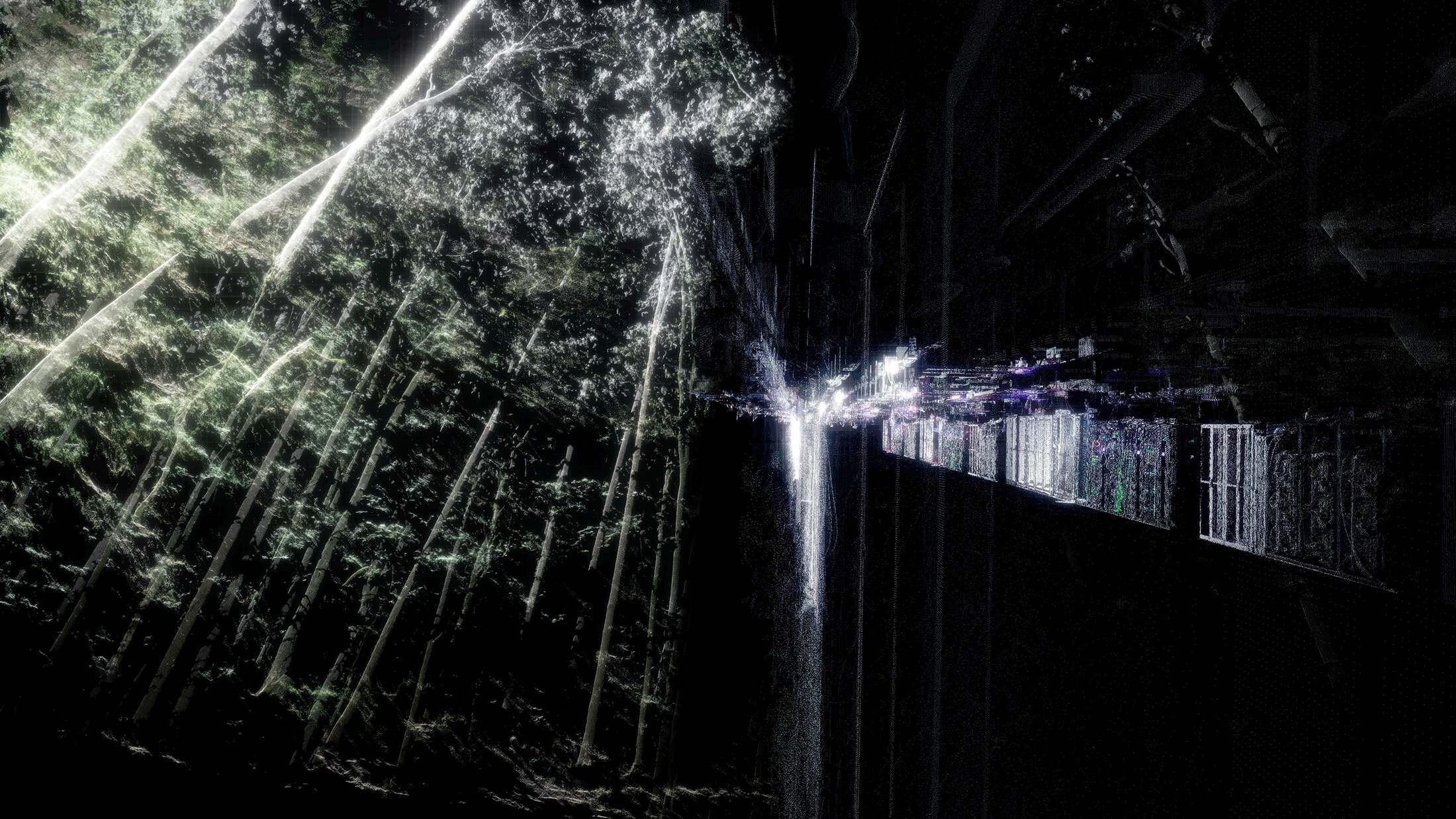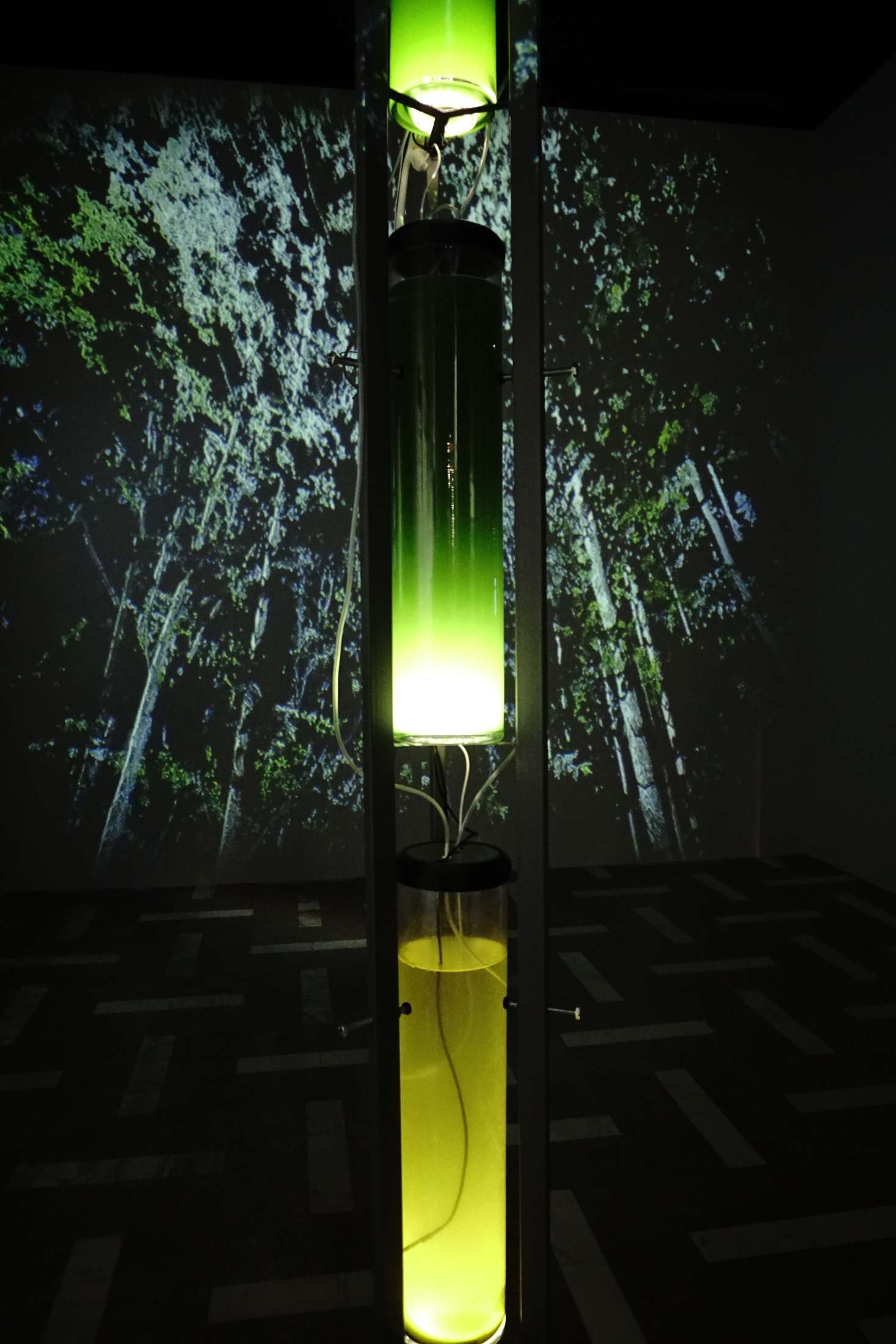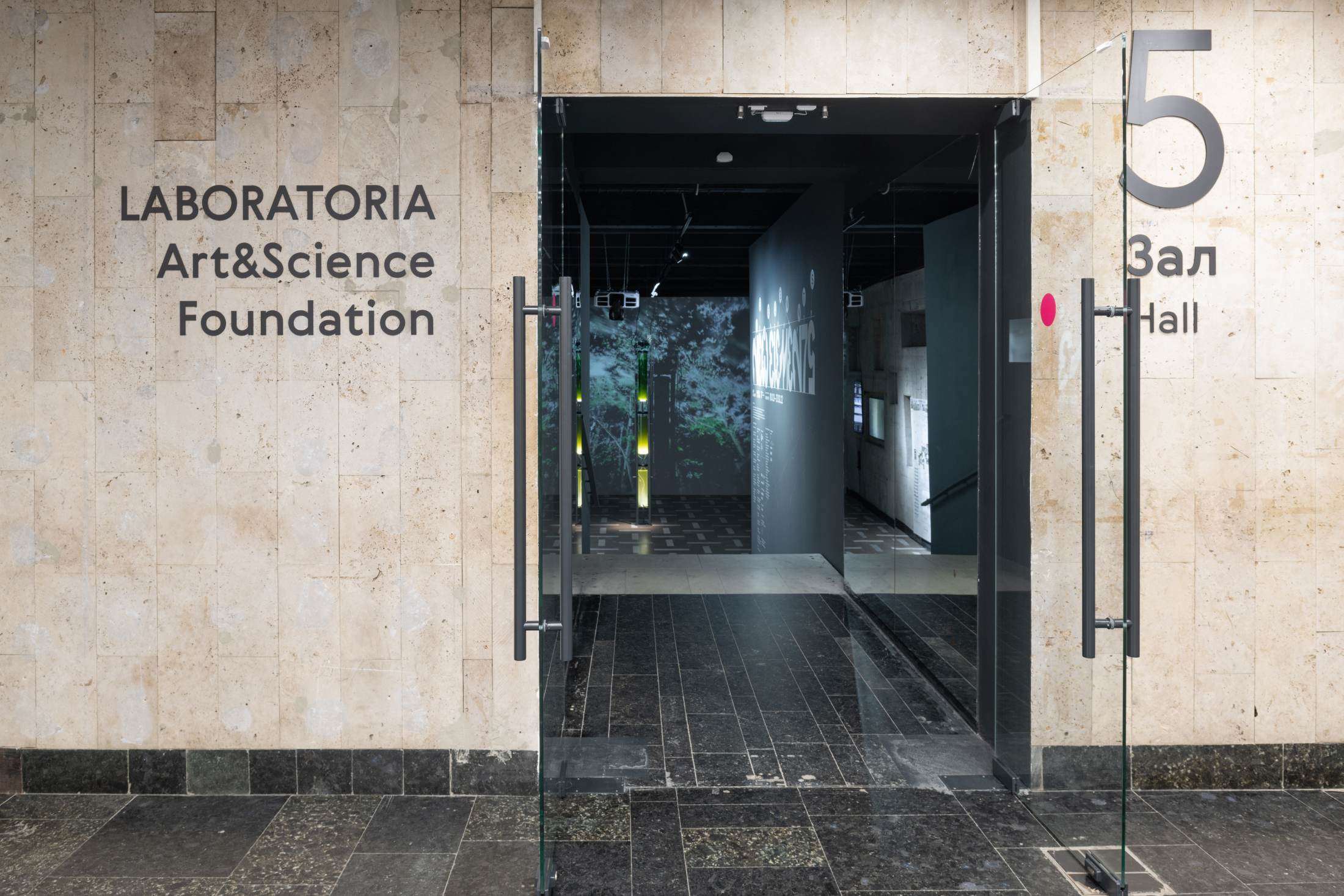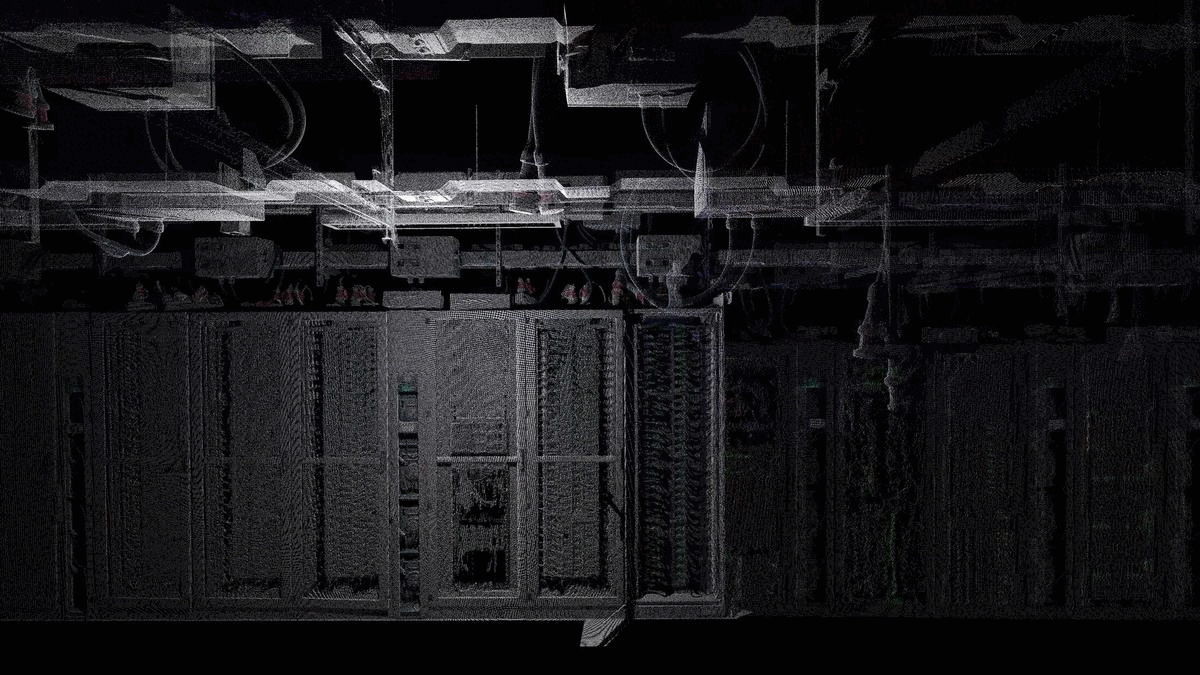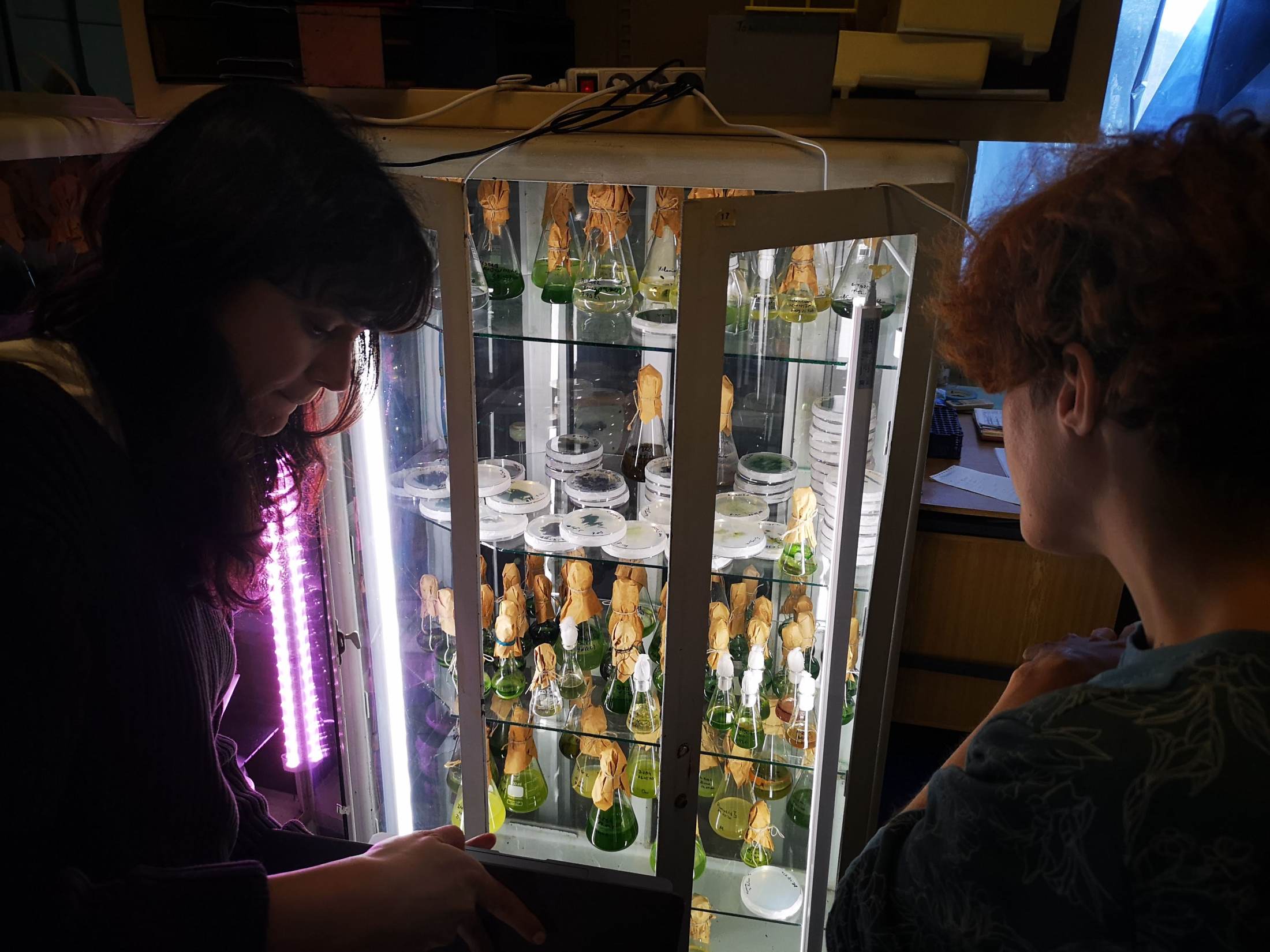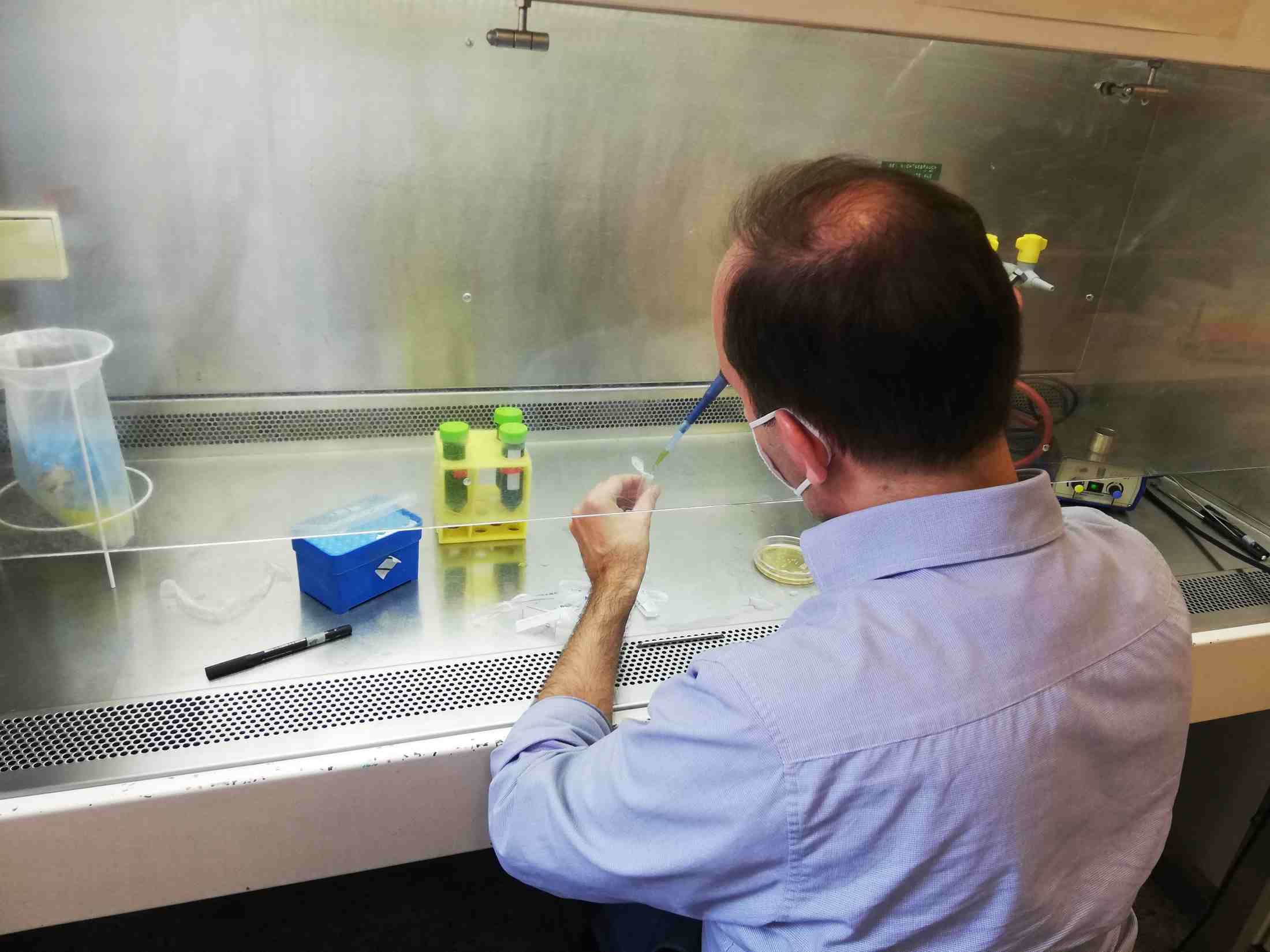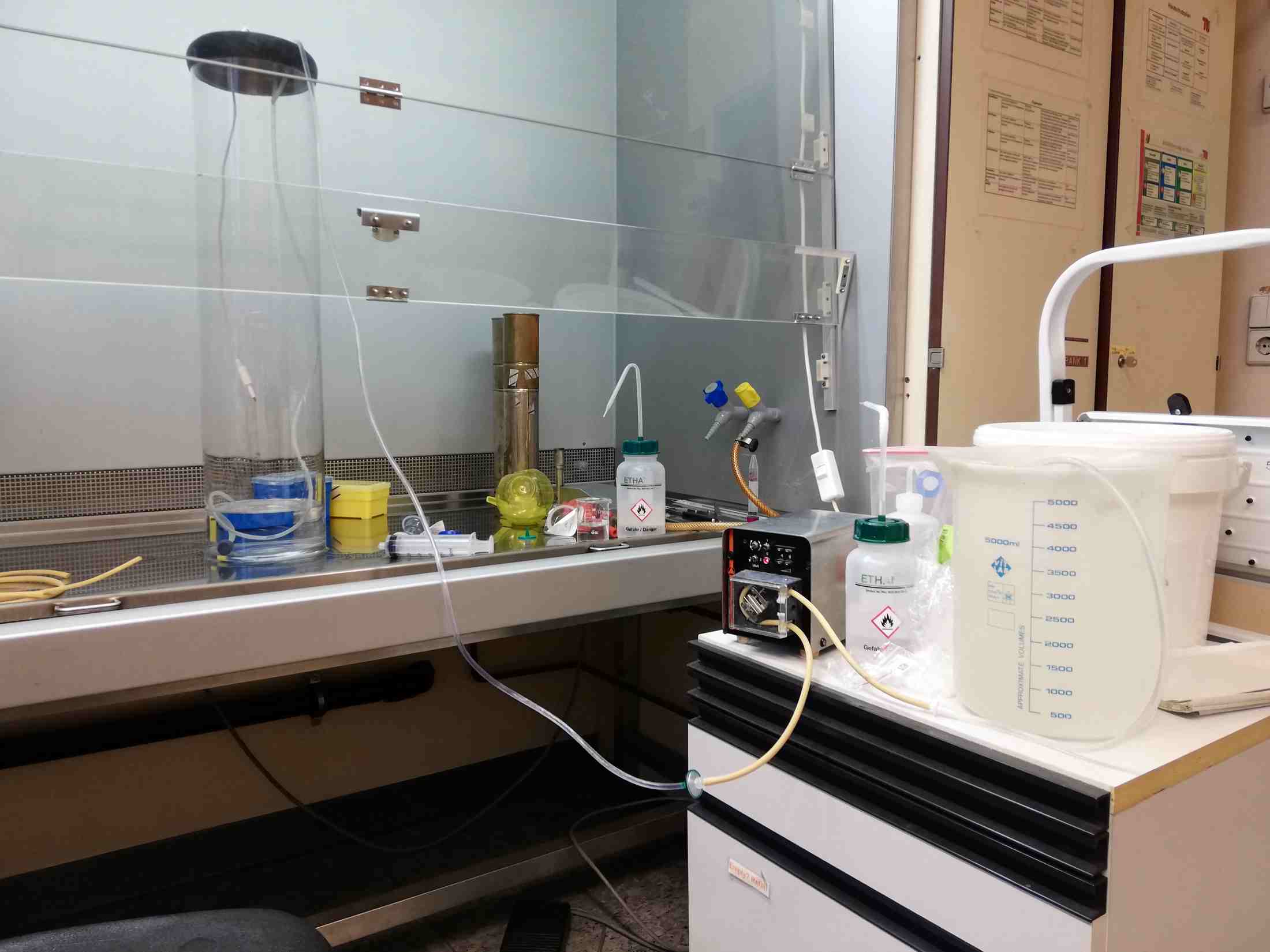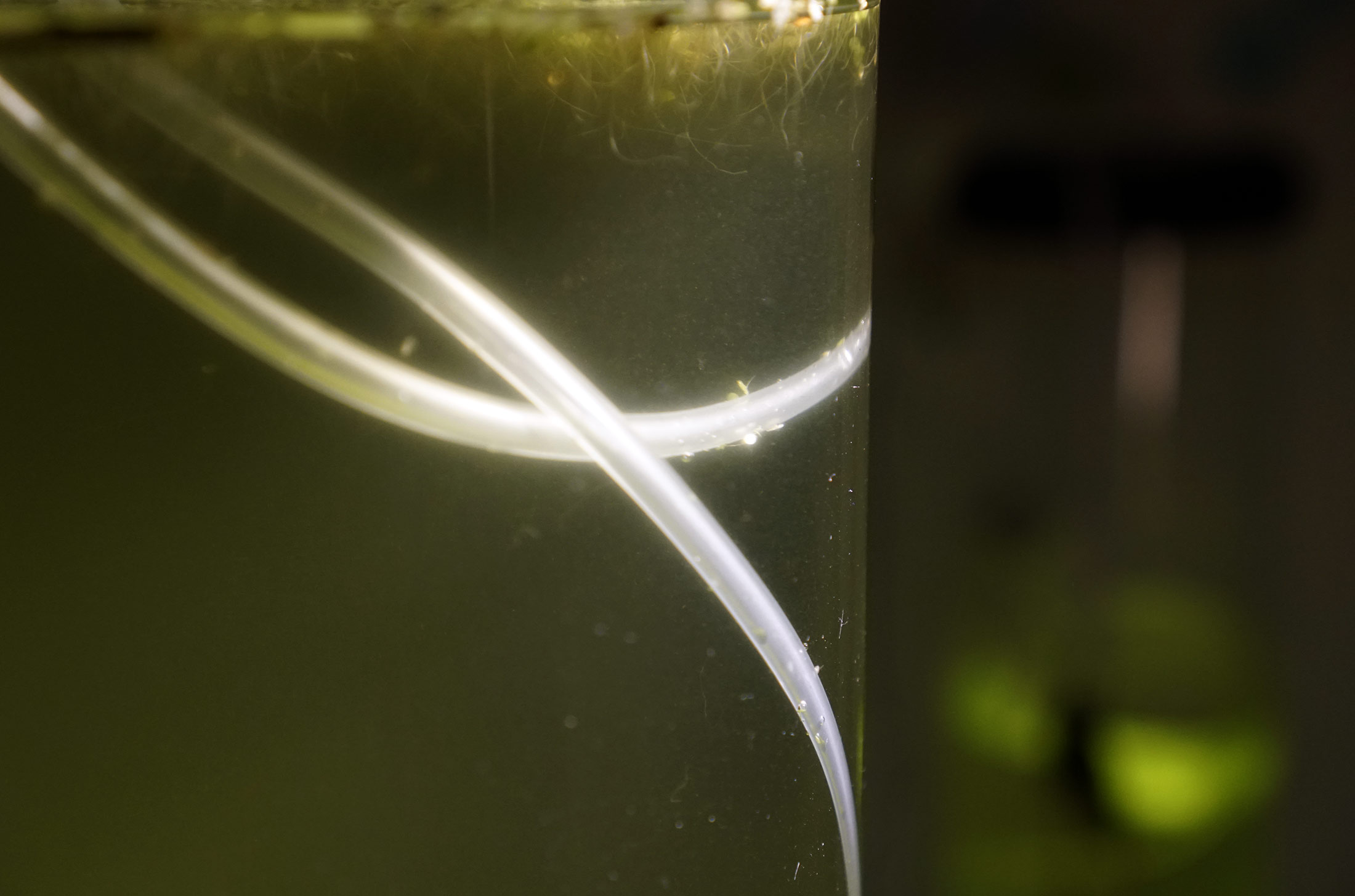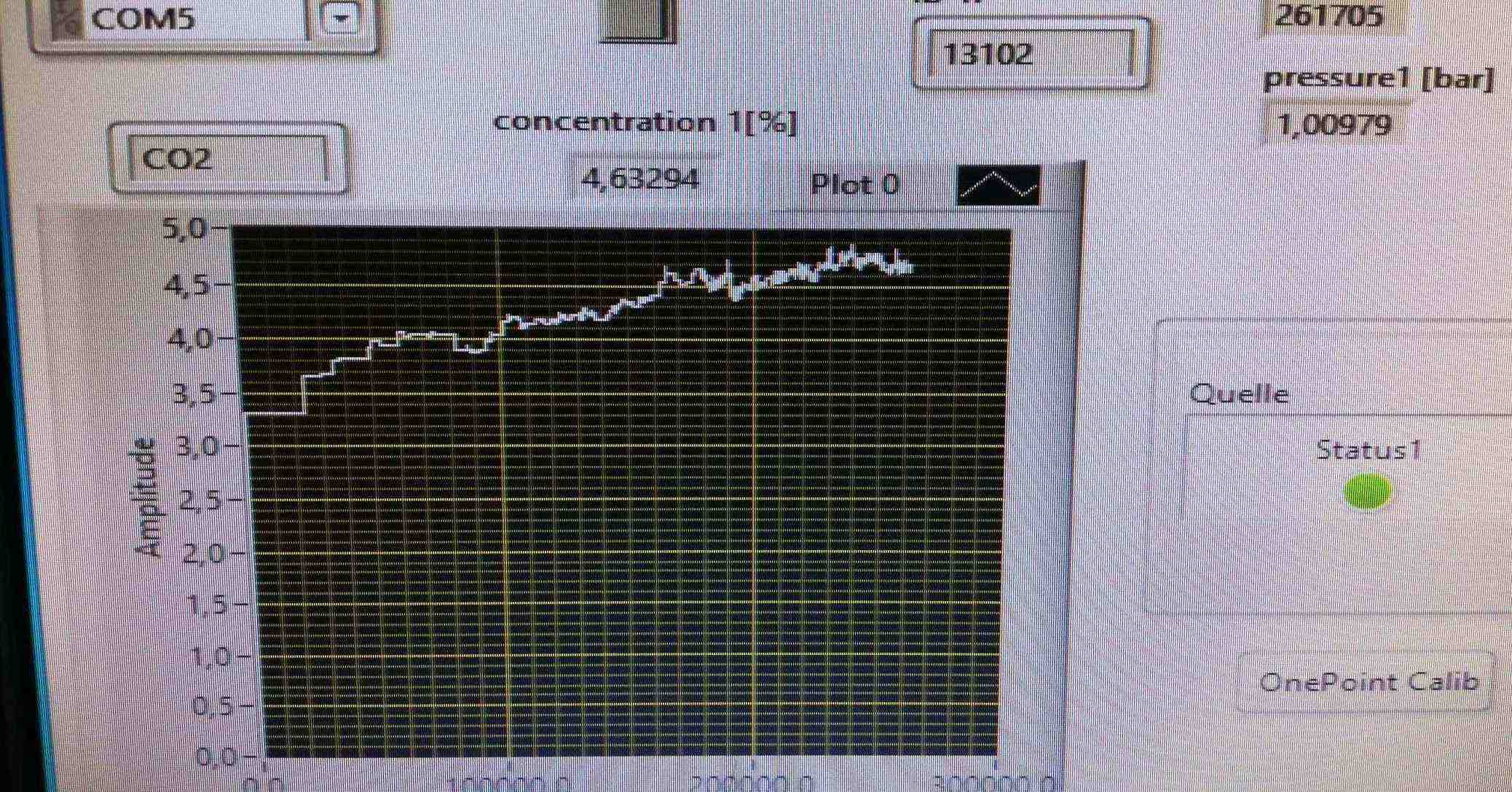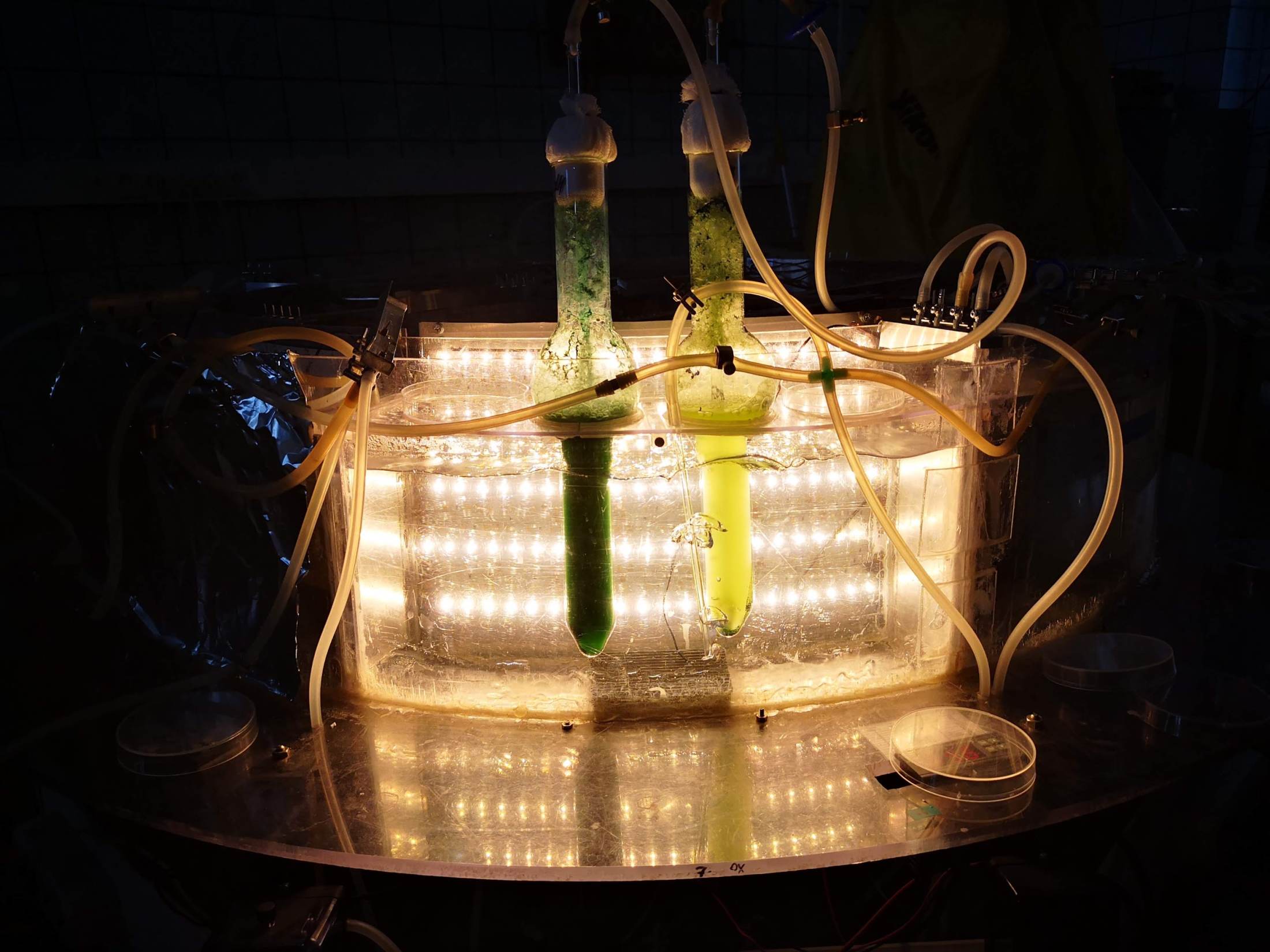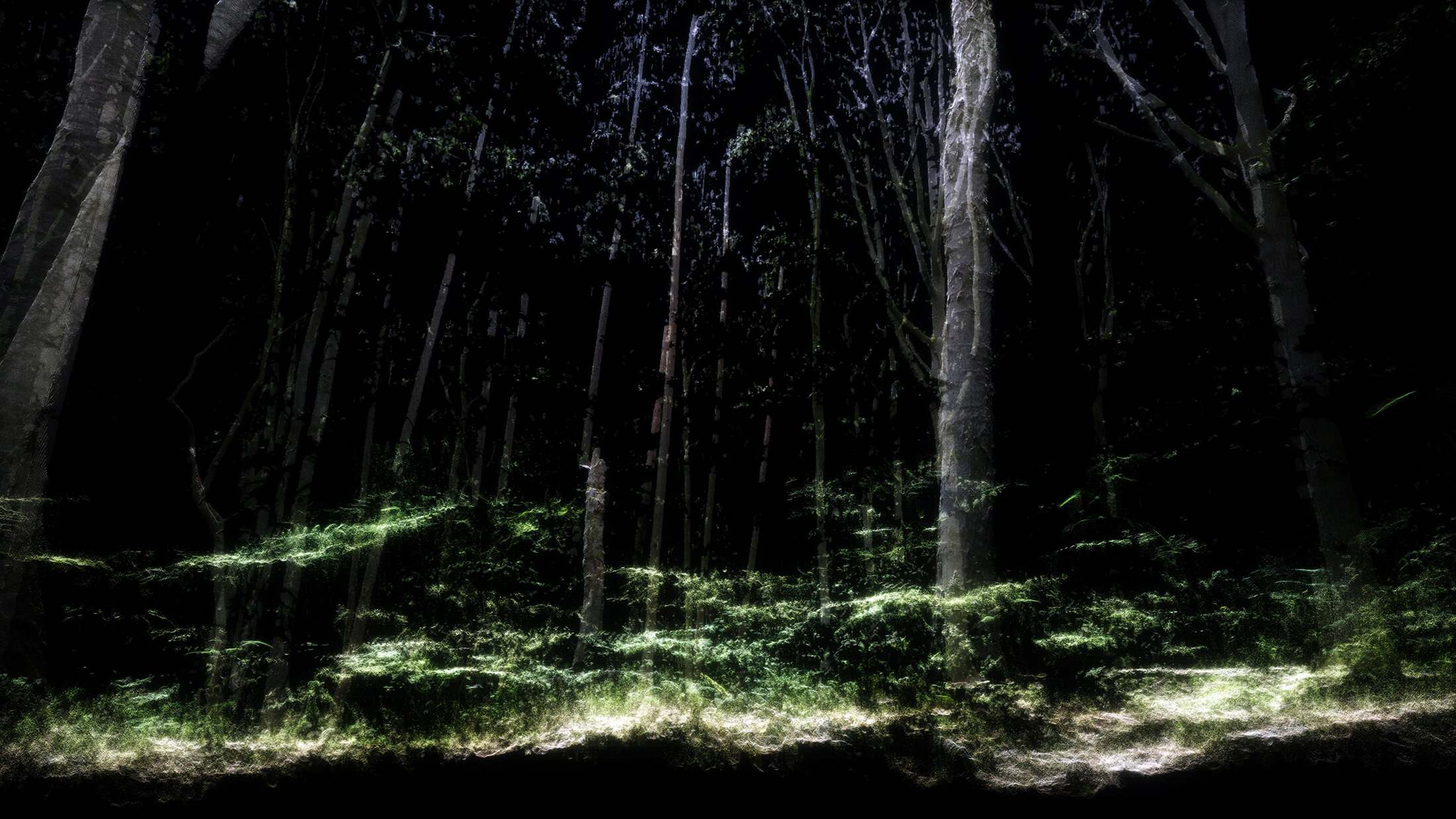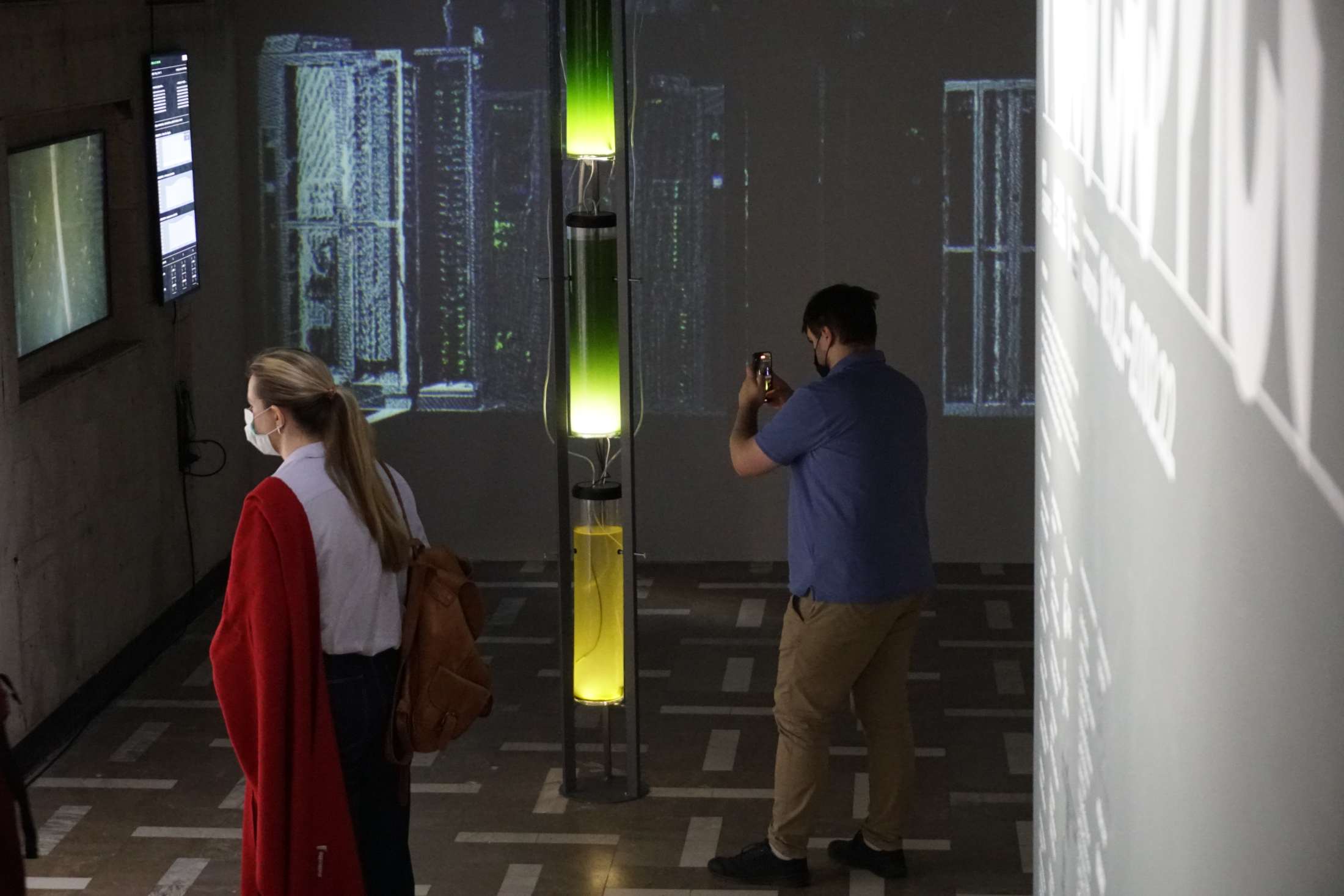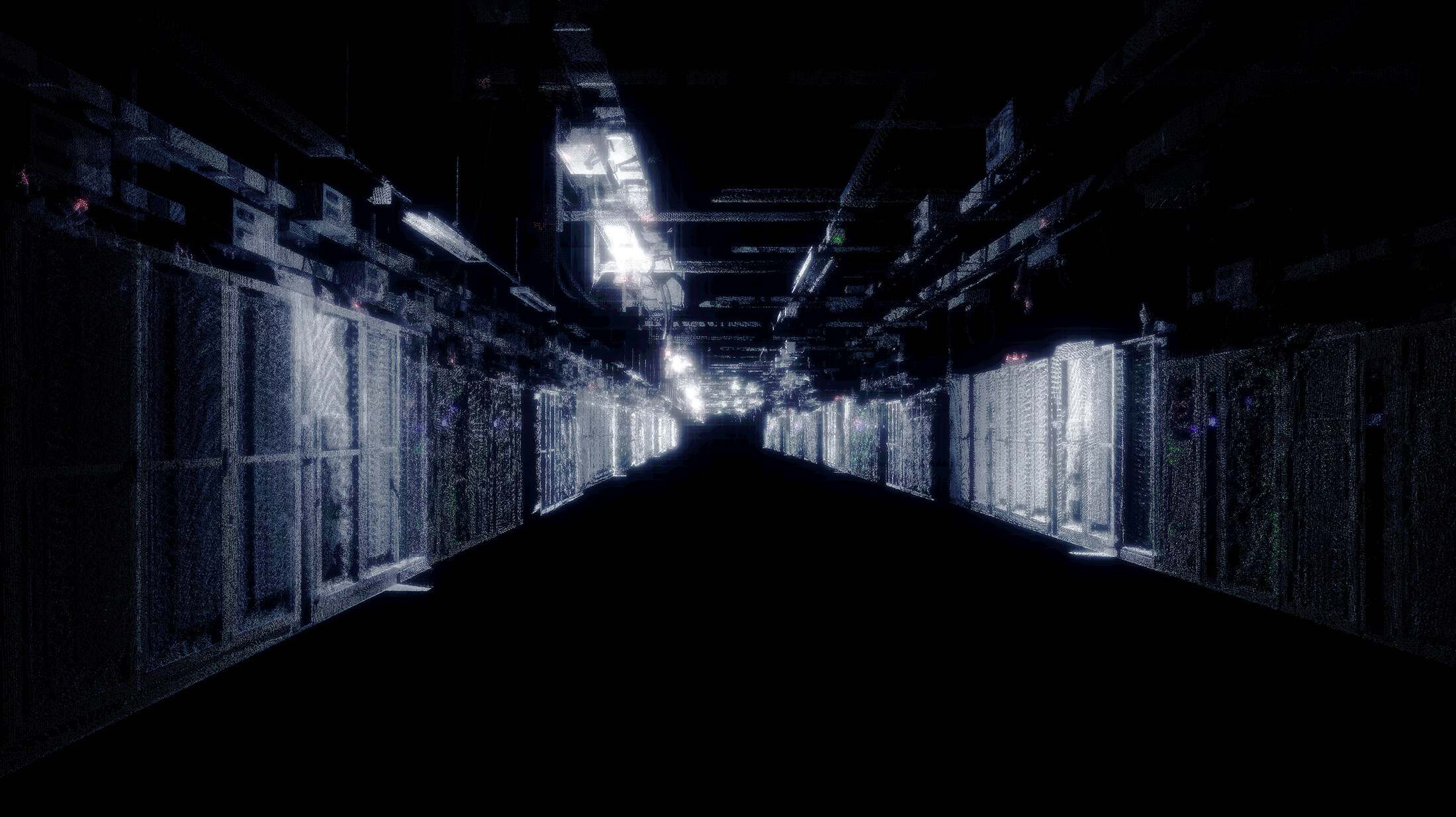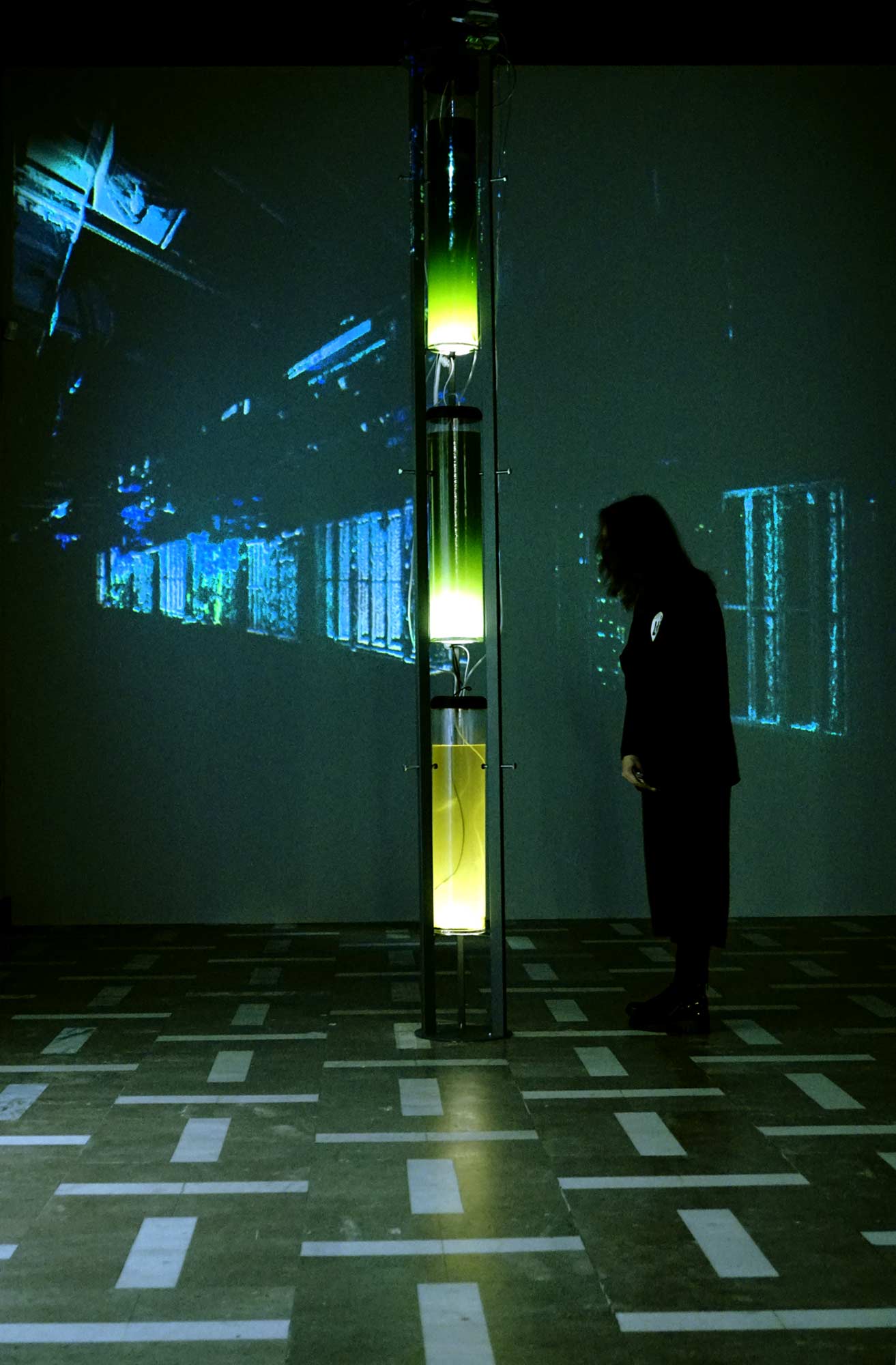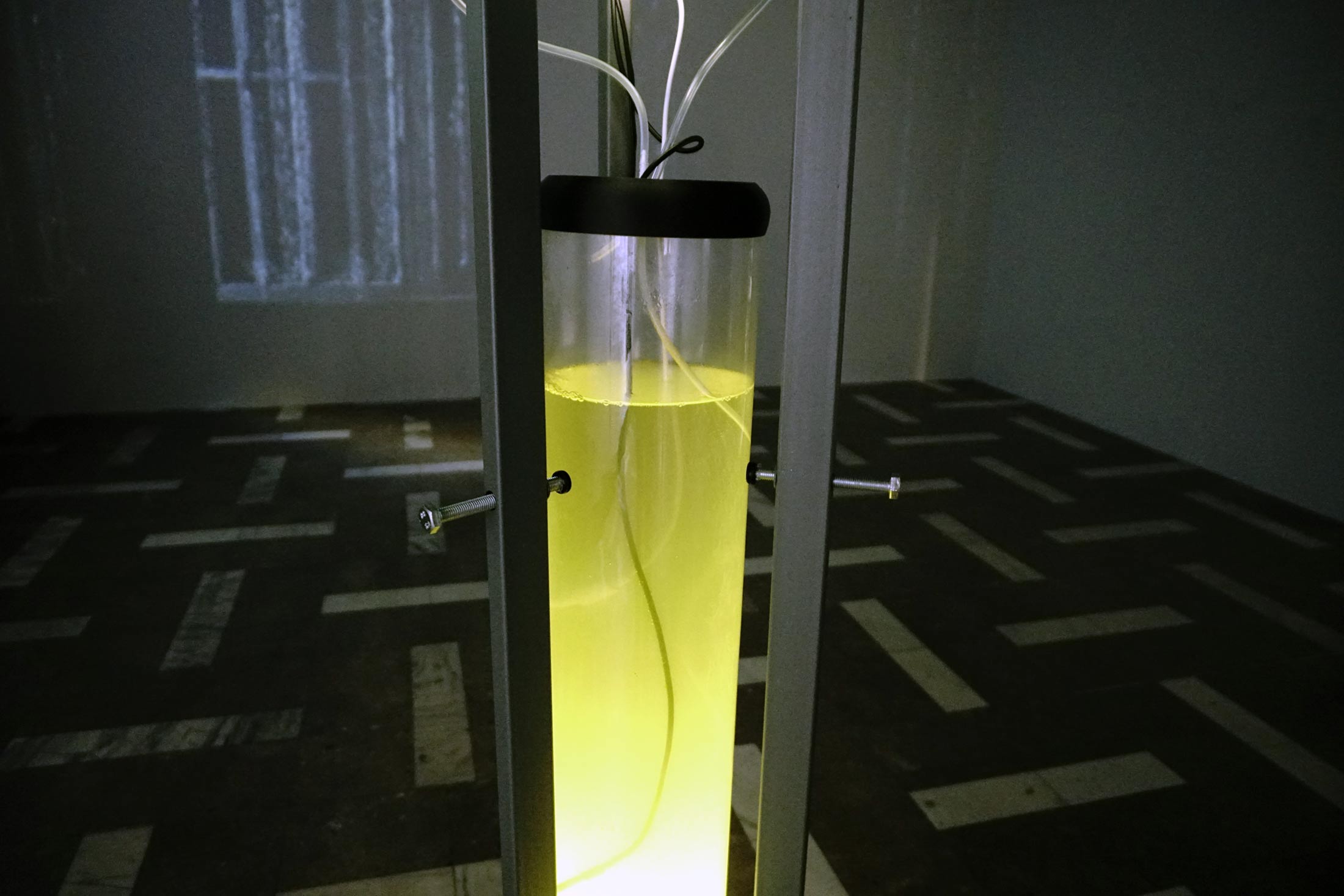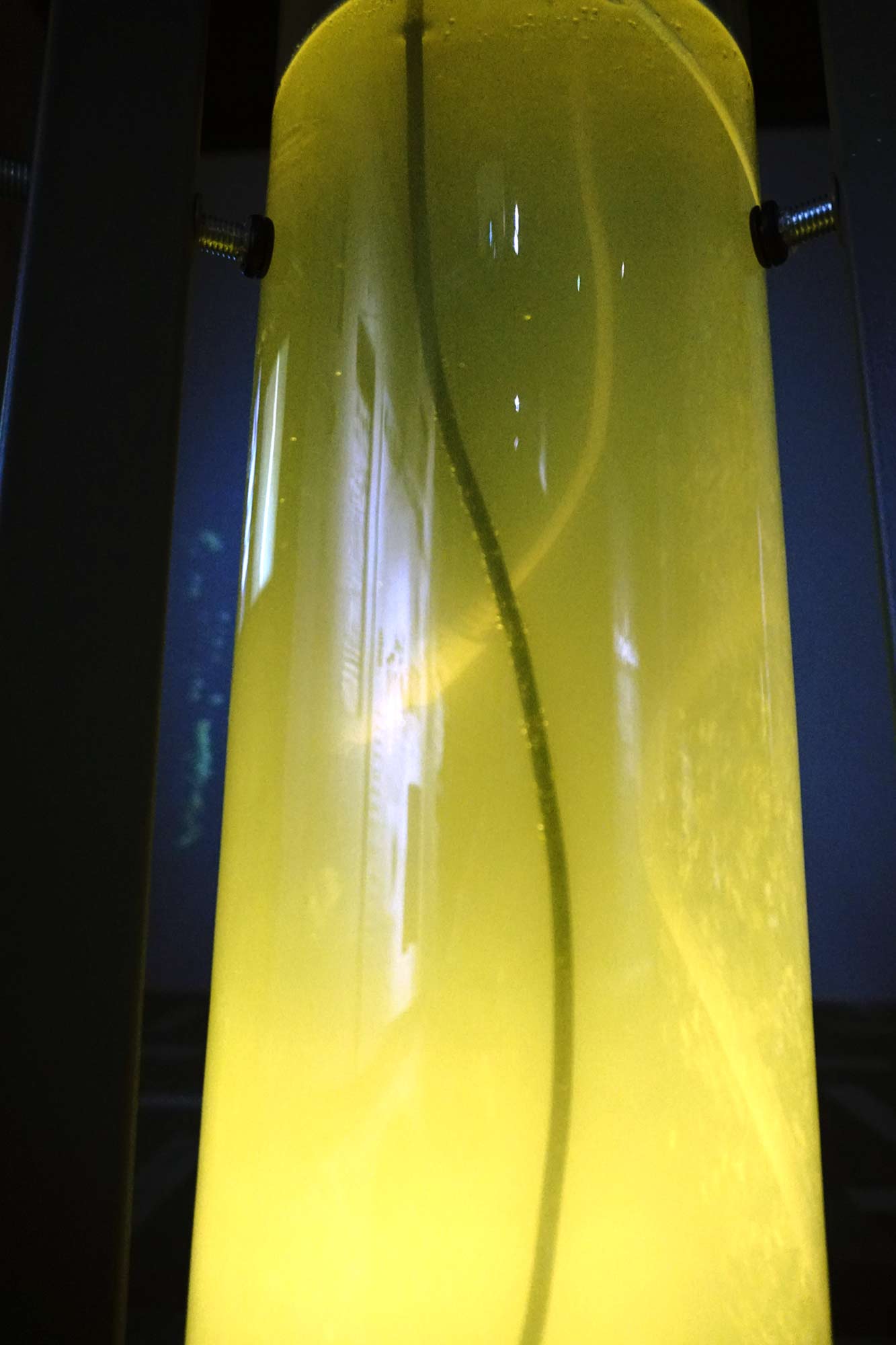Materials and media
Year
Co-authors
Commissioned by
Exhibition
Support
We are in wonder about nature and all its glories, most of which we cannot understand, especially since we did not create the natural world. The Internet has now reached a level of complexity and unpredictability that it shares the wonder and surprise, and the emergence of unanticipated behaviours. – Leonard Kleinrock, in: Technobiophilia
Between observation, meditation, material experimentation and playful action, the audiovisual installation ooze [ὕλη] offers an algae-altered narration about aspects of our world by investigating visual metaphors of network dynamics modulated in realtime through interaction with a living biological sculpture and the larger world. ooze suggests an aesthetic and conceptual relation by interlinking the forest as a hyperorganism with a serverfarm as a metaphor for the underlying networks of our digital and carbon lifes.
3D-laser scans of these two infrastructures combined with a living sculpture from algae bioreactors are reconfigured to a new sensory hybrid ecosystem, an experimental techno-organic collage, challenging our human perception in a world where natural matter (hyle), téchne and the digital continue to be more and more intertwined, inseparable even.
To introduce disturbances and unpredictable events into the setup (as happens in real life), an organic entity, a biological sculpture from microalgae, lives inside the installation, connected via sensors to the outside world. The organic interface can be understood as an analogue random number generator that is driving parts of the video and sounds in the exhibition.
Growth, metabolism and productivity of the organisms create uncontrolled events that are monitored by sensors. The bioreactors are also a physical interface for the visitors, for example by shining their cell phone lights on the algae cultures, the culture will in longterm grow better and produce more oxygen which is transferred in real time as parameters to the point clouds. This allows visitors to feel interwoven into a world of computation, where the digital and the natural dissolve into each other, but where human presence also leaves traces and noise in the system.
Cyberspace. A consensual hallucination experienced daily by billions of legitimate operators, in every nation, by children being taught mathematical concepts… A graphic representation of data abstracted from banks of every computer in the human system. Unthinkable complexity. Lines of light ranged in the nonspace of the mind, clusters and constellations of data. Like city lights, receding…” – William Gibson, Neuromancer, 1984
Curatorial Statement:
Theresa Schubert is a German artist who works on the relationship between biological and technological processes, reframing the old and worn-out duality of nature versus culture. In her work “OOZE” she examines systems of measurement that connect both the biological and the digital world. She is working with point clouds created from 3d scans made from a forest and the infrastructure of a data center; both environments are fragmented into disconnected points in space through the optical method of quantification. The installation also includes an algae bioreactor that is continuously scanned through a similar optical process. The activity of the algae turns into random numbers, which are used to change and animate the point clouds of the two environments. It is a beautiful meditation about how measurement is always reductive but also a material process — the data it generates are not abstract but part of the material world.
Credits:
- Artist: Theresa Schubert
- Programming and Sound: Ivan Taranin
- Scientific Support: TU Berlin, Department of Bioprocess Engineering (Stefan Junne, Thomas Högl), Moscow Institute of Plant Physiology, Micro-Algae Laboratory (Maria Sinetova)
- Sensor Programming: Sarah Grant
- Thanks to: Poznan Supercomputing and Networking Centre, Laura König (MPI Magdeburg), Alessandro Volpato (toplab e.V.)
Commissioned by Laboratoria Art & Science Foundation and Kaspersky.
